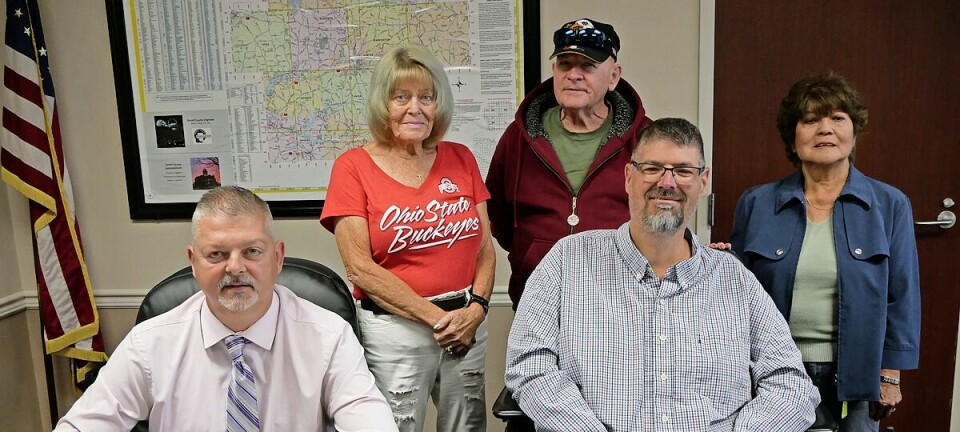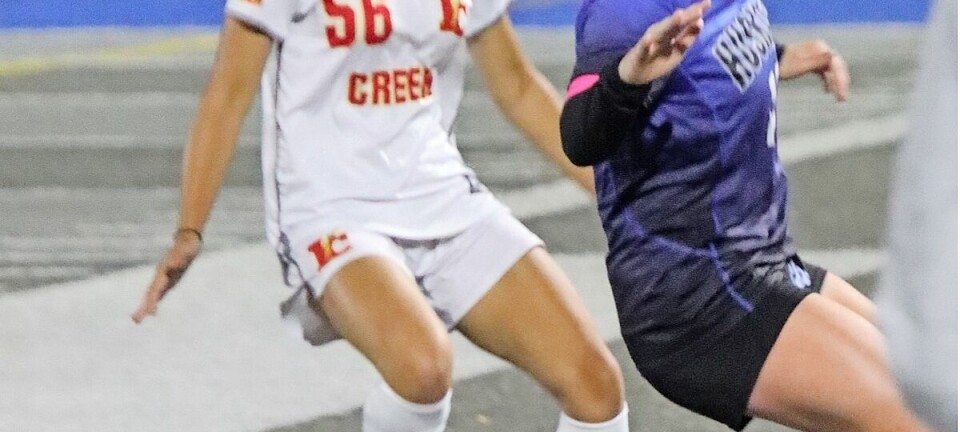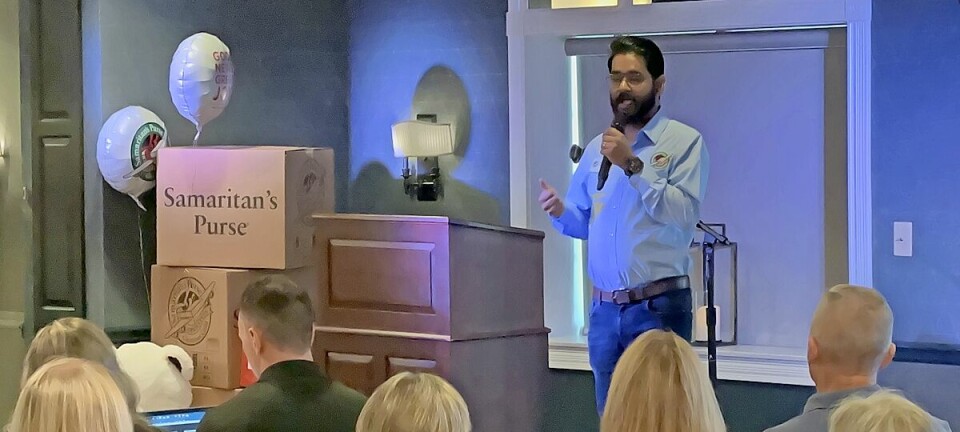Communication key during West Holmes State of the Schools forum

Last week The Bargain Hunter explored how West Holmes School District superintendent Kris Pipes-Perone and treasurer Jamie Zeigler felt the West Holmes Local Schools State of the Schools forum went. With close to 200 people in attendance, the meeting provided a chance to share information vital to the community, including discussion of the upcoming May 5 school levy.Pipes-Perone provided information at the beginning of that meeting focusing on the nuts and bolts of the levy, noting, The levy is a fixed dollar amount in which the school district will not collect one dollar more than the $422,000 listed. The 1.22 mil, 10-year levy was originally passed in 1978, and has been providing the same dollar amount to the district over the past 33 years. The average homeowner currently pays about 10 cents per day on the levy.This levy will provide for operational expenses, such as personnel, certified teachers and support staff, instructional supplies, state mandated testing and it will not raise taxes, said Pipes-Perone. We wanted to provide the people with as much information as possible so that they can better understand the levy and how it will be applied.From that point on, the evening was driven by the public, with people asking a number of questions concerning the district. Following are some of the key questions raised during the forum.1. Financially, how do we compare to other districts? Sam SteimelThis question comes up a lot, and we compare ourselves to the four counties in which we have district property valuation, which is Holmes, Wayne, Ashland and Coshocton counties, said Zeigler. We did a survey based on information provided to us by the Ohio Department of Education, and with it we took every public school district in the four counties and ranked ourselves. Out of 21 schools in those four counties, we currently rank fifth from the bottom in total expenditures per pupil. Our district spends approximately $8,500 per pupil to educate them. The highest district spends over $10,000. The statewide average is $10,565. To give you an idea of where we stand, both Triway and Southwest Local are between $9,500 and $10,000. Us being at $8,500 is very commendable.That is one of the biggest gauges we use to compare ourselves to the schools around us, and it shows us that we are doing everything we can to make sure that we spend wisely while giving our students the best education possible.What you see going on right now in other districts as far as budget cuts is essentially what we did back in 2005-2006, said Pipes-Perone. The cuts we made then, which were a little more than $1 million, if you roll it over annually, it has saved the district close to $8 million. We have worked hard to make cuts and not bring them back, and we have found other ways to serve our students in the areas we have found to be important.2. In terms of bussing, what is the state of our bus fleet? Sam CarpenterStatewide, West Holmes School District is ranked 11th out of 500 school districts in terms of square miles, said Pipes-Perone. Our busses travel 3,000 per day to make sure students can get to school, and the average bus has 126,000 miles. We currently have 26 active busses, nine spares, two handicap busses and a van, and the average age of them is about 2003. What we are relying on (as to the state of the bus fleet) is the state inspections that happen over the summer. We look at miles, at the usage, at how much rust there is and how much repair there might be. We are trying to figure out how we can best replace the busses that do not meet the state standards, and our average bus life is between 14 and 16 years.3. What are the planned changes for the budget next year? Regina MartinWe are in the same situation that we are in every year, and essentially we are looking at class sizes, how many students we have going into each grade level, and how much staff we may need, said Pipes-Perone. As of right now we are compiling, and if we find that we can stay with the same class size ranges that we have over the past several years, we may be in a situation where we have to RIF (reduction in force) staff, if thats what we have to do to maintain that level where we dont have to go out and ask for additional dollars. But we are also looking at service agreements and other ways of saving money. We are constantly evaluating everything to see where we can save. Class size is important, and we are not saying that we are lowering them, but if we have to cut certain things to maintain the budget, then that is what we will do.This is a very critical time for schools right now, added Zeigler, especially those who are over 50 percent funded like West Holmes is. Right now we are facing major cuts to our state dollars in the range of $1 million to $1.2 million next year, based on the governors preliminary budget.4. Would there be a cost savings of any kind in eliminating the individual elementary buildings and going to a central campus area? Larry YoungAs far as would there be a savings if we shut them down and went to a large one, I can tell you from a district perspective it would, said Pipes-Perone. But, we also have spent quite a bit of money in making these existing buildings efficient, and some of these buildings are starting to win the energy battle. Also, to do that would require us to go out to our local voters and get that building built with new operating expenses. Our taxpayers would have to pay a lot more. This issue has not been on the table. These buildings are a vital part of our educational system and our community, and they are a focal point of our communities.What it would require is a bond issue, like what was passed to build the high school in 1996, added Zeigler. The bond issue would give us the funding to complete the process, but it would also mean another 23 year process of generating the money to pay off the bonds and the interest.5. Could you give us some more specifics on cost reduction as it relates to curriculum and not compromising the quality of education? Laura BarrWe are fighting hard to keep the programs we have, and part of that is with the agreement with the teachers who agreed to go into Race To the Top funding, said Pipes-Perone. That is a way of supporting the instructional needs of our kids. It helps pay for some of the programs and people that we need in order to keep our classroom sizes in place, and offer the level of education we are at. We have a very unique situation in the West Holmes District, and that is with a local union rather than with the state OEA associations. We agreed that if we can not pass out $426,000 over four years, that is less money going out of our general fund that we would have to go back and ask for from our community members. At this time, we are trying to find resources and ways to maintain current classroom sizes and provide the best educational opportunities for our students.We also look at all contracts as they come due, said Zeigler, who used the example of a copier contract which came due, which they were able to reduce from $100,000 to $50,000. When those come available we try to flesh those out and get bottom line prices. Anybody who knows me knows I go for the lowest dollar we can possibly get. Another example is our property and liability insurance. What we are paying now as compared to 2008 is almost 70 percent less. Where there is opportunities to save, no matter how small the savings might be, we take advantage of those. It could be a computer or a text book savings, or I could be a teacher in a classroom.6. We always hear about state, federal and local dollars. Where do those dollars come from? Richard HaunFifty-five percent of our funding comes from the state of Ohio, said Zeigler. Forty-two percent comes from local funds, which consists of property taxes, revenues from interest, open enrollment, tuition payments from other districts and special education costs from other districts. The other three percent comes from the federal government. Part of the cuts we are receiving is the three percent from the federal government. Two years ago the state of Ohio applied for stimulus funding, to help them meet operating needs. At that time, they gave us approximately $700,000 of federal money. Property taxes alone are approximately 38 percent of the districts revenue.One question we hear a lot is, what about the lottery money, is that additional funds? added Pipes-Perone. That money goes into the states bank account, so that they are able to give districts money. It is not money that we receive on top of anything else. Essentially it goes into the states budget so they can give something back to districts, but it does add some to what they are able to give us.7. What is West Holmes doing to maintain our operational costs and avoid the need for new levies? Randy HummelWe have a process in which every single expenditure in the district runs through both Kris and I, said Zeigler. Every day we look at these purchase orders and ask, is this really necessary, or where can we get this service for cheaper? We also have something very unique that you wont see hardly anywhere else, and that is, if at any time our health insurance renewals come in above 10 percent, at that point, it is an automatic change in benefit for the district. We have been fortunate at West Holmes, because, over the past five years, we have not had to increase our premiums. We have worked hard to reduce our health care costs, and we have found that it is cheapest close to home, and if our costs would happen to exceed a certain dollar amount, we are back at the table. There is no way to know what the budget is going to be five years from now, but to have that kind of health care insurance control in our budget is huge. It is key for West Holmes and key for making our levies last as long as possible. In 2006 and 2007, we went through major budget cuts, and we had over 20 people who lost their jobs. Because of the non-replacement of those positions, the district has been able to move forward and continue to experience huge savings from that $1 million that was saved in 2005-2006.I am proud to say that when I look at our budget, and we look at our staff and our community, we have a great relationship and partnership to make these things possible. Also, the commitment by everyone to go after the Race To the Top dollars was huge. That kind of effort did not happen in many school districts, so it does speak volumes about West Holmes. We are in the service business, and the majority of our expenses is going to be in salaries and benefits, and we do whatever we can to control those numbers. We are just shy of 80 percent of our budget with those, while the state average is around 85 percent. Weve always heard that when those numbers reach 85 percent, you need to take a hard look at reducing your staffing levels. Fortunately, we have been able to address that early on and maintain it. 8. What is being done to ensure safety in our school district as we look toward the future? David NallyOur job as educators is to educate all kids, and it is extremely important that we find a balance between safety, instruction and their right to be in that classroom, said Pipes-Perone. Its not a secret we made the news with one of our students, and it is no secret that we didnt see those same things in the school. So what we hear happening in the community or in the news isnt necessarily what is taking place in the schools and classrooms. We provide training for our staff, and put things in place for the students, but most of all, we are following the letter of the law in providing education for every student, in the environment they are in.We do have alternate school options with Project Stay, but quite honestly, we arent sure where Project Stay will be in the coming years, so we are exploring other possibilities.

























